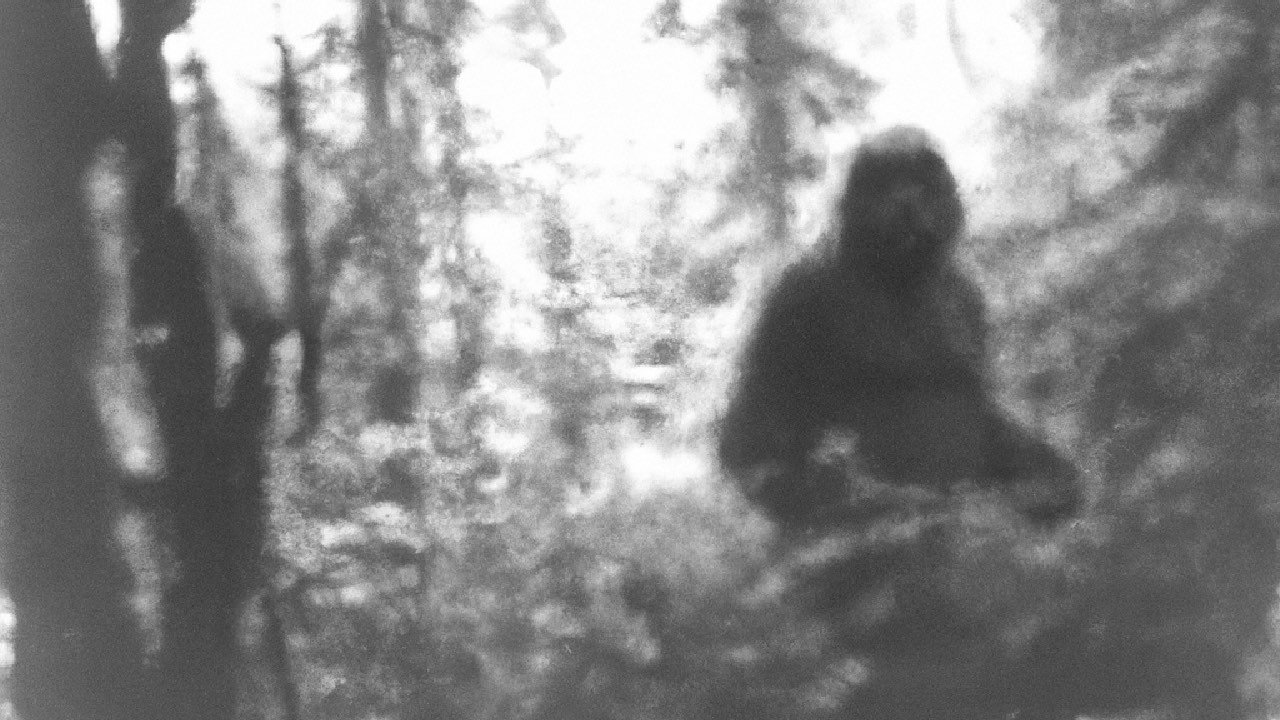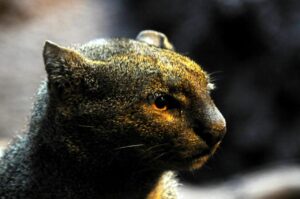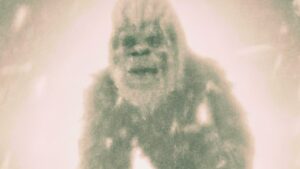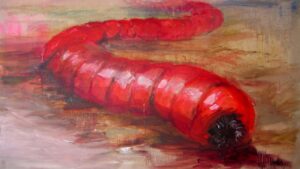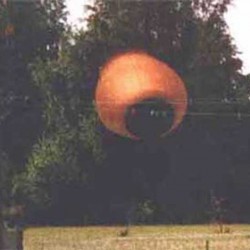Cryptids! Those creatures that are said to exist but for which there is no scientific evidence. Despite this, many (many) people continue to search for these mysterious beasts, driven by a sense of adventure, curiosity, or a belief in the unknown. Here, we will take a look at ten monstrously famous cryptids that are still being searched for today.
1. Bigfoot or Sasquatch
Bigfoot, aka Sasquatch, is perhaps one of the most famous cryptids in the world. It is said to be a large, ape-like creature that inhabits the forests of North America. Sightings of the creature have been reported for decades, with descriptions of it being up to 9 feet tall and covered in dark, shaggy hair. Many people believe that Bigfoot is a missing link between apes and humans, while others think it could be a type of undiscovered primate.
Despite numerous expeditions and searches, no concrete evidence of the creature’s existence has been found. However, many people continue to search for it, driven by a sense of adventure and a desire to uncover the truth about this mysterious creature. Find more stories about Bigfoot.
2. Loch Ness Monster
The Loch Ness Monster — the legendary creature that is said to live in Loch Ness, Scotland. The first recorded sighting of the creature was in the 7th century, but it wasn’t until the 20th century that it became a worldwide phenomenon. The creature is often described as a long, serpentine creature with a hump or series of humps on its back. Many people believe it to be a type of dinosaur that has managed to survive to this day. Despite numerous attempts to find the creature, no conclusive evidence of its existence has been found.
Search for more stories about the Loch Ness Monster stories on Cryptoworld.
The earliest report of a monster in the vicinity of Loch Ness appears in the Life of St. Columba by Adomnán, written in the sixth century AD. According to Adomnán, writing about a century after the events described, Irish monk Saint Columba was staying in the land of the Picts with his companions when he encountered local residents burying a man by the River Ness. They explained that the man was swimming in the river when he was attacked by a “water beast” that mauled him and dragged him underwater despite their attempts to rescue him by boat. Columba sent a follower, Luigne moccu Min, to swim across the river. The beast approached him, but Columba made the sign of the cross and said: “Go no further. Do not touch the man. Go back at once.” The creature stopped as if it had been “pulled back with ropes” and fled, and Columba’s men and the Picts gave thanks for what they perceived as a miracle
Loch Ness Monster – Wikipedia
3. El Chupacabra
The Chupacabra, also known as “goat-sucker,” is a creature said to inhabit parts of the Americas, particularly in Mexico and the southern United States. The creature is said to be a reptilian or quadrupedal mammal with spines or quills running down its back and has been reported to be around 3-4 feet tall. The first reported sighting of the Chupacabra was in Puerto Rico in 1995, where several farmers reported finding their livestock dead with puncture wounds on their necks and the blood drained from their bodies.
Since then, Chupacabra sightings have been reported in many other countries in the Americas, including Mexico, Chile, and the United States. Many people believe the Chupacabra to be a type of unknown animal, while others think it could be a genetic experiment gone wrong or even an extraterrestrial creature. Despite numerous expeditions and searches, no evidence of the creature’s existence has been found. Some scientists believe that the Chupacabra could be a misidentification of known animals such as the coyote or the grey fox, which can appear quite different when suffering from mange, a skin condition that causes hair loss and scabbing.
There are also many hoaxes of Chupacabra in the form of animal corpses that have been made to look like the creature. Some researchers say that the Chupacabra is a modern legend, born out of a combination of fear, superstition and misinformation. The creature has become a cultural phenomenon and a symbol of the mysterious and unknown. It has inspired movies, books, and even songs, and continues to be a topic of interest for both researchers and the general public alike.
More Chupacabra stories on Cryptoworld!
4. Mothman
The Mothman — said to have been sighted in West Virginia, USA. It is described as a large, winged creature with glowing red eyes. The creature gained widespread attention in the 1960s after several sightings were reported in the town of Point Pleasant. Some people believe the Mothman to be a type of demon or angel, while others think it could be a type of undiscovered bird. Despite numerous attempts to find the creature, no real evidence has been found.
Mothman sightings in Point Pleasant, West Virginia, seem to have occurred in the fall of 1966 and continued through 1967. The first reported sighting was around November 12th, 1966, by a couple, Roger and Linda Scarberry, and their friends, Steve and Mary Mallette, who claimed to have seen a large, winged creature while driving in the town of Point Pleasant.
The collapse of the Silver Bridge, which occurred on December 15, 1967, is often associated with the Mothman legend, but no actual sightings were reported on that day, and there is no evidence linking the creature to the bridge collapse.
5. Yeti or Abominable Snowman
The Yeti, also known as the Abominable Snowman, is said to inhabit the Himalayan region of Nepal, Bhutan, Tibet and other mountainous regions of Asia. It isBritish explorer Eric Shipton described as being a large, ape-like being with shaggy white or dark fur. Many people believe the Yeti to be a type of undiscovered primate, while others think it could be a bear or other known animal. Despite numerous expeditions and searches, no evidence has been found.
In the early 20th century, British explorer Eric Shipton took several photographs of large, human-like footprints in the snow while on an expedition in the Himalayas, which were later purported to be those of the Yeti. In 1960-61, British mountaineer and explorer Sir Edmund Hillary led an expedition (Silver Hut expedition) to the Himalayas, which also searched for evidence of the Yetis existence.
Search for Yeti stories on Cryptoworld.
6. The Jersey Devil
The Jersey Devil, said to inhabit the forest of Pine Barrens, New Jersey, USA. It is described as a winged, horse-like creature with a head like a goat and a long, forked tail. The creature has a long history in New Jersey folklore, with the first recorded sighting dating back to the 1700s. According to legend, it was born as the 13th child of a woman known as Mother Leeds, who was said to have been a witch. It was believed to be cursed and subsequently taken by the devil. Sightings of the Jersey Devil have been reported for centuries, with many people claiming to have seen the creature flying in the night sky or heard its eerie screams.
7. Kraken
The Kraken is a legendary sea monster that is said to dwell off the coasts of Norway and Greenland. The creature is typically described as a giant octopus or squid, with tentacles that are capable of dragging ships and sailors to their doom. The legend of the Kraken is believed to have originated in Norse mythology, where it was said to be a creature of the sea that was feared by sailors.
In the 19th century, sailors and fishermen began reporting sightings of giant octopuses or squids in the North Atlantic, leading to widespread speculation about the existence of the Kraken. Though many scientists have explained that these creatures are actually giant squids, which can grow up to 43 feet in length, and are known to live in deep ocean waters, there is no evidence of a giant sea creature that is capable of sinking ships or dragging sailors to their doom, but the legend of the Kraken continues to capture the imagination of people and remains an enduring symbol of the mysterious and unknown depths of the ocean.
Search Cryptoworld for tales of Giant Squid and Sea Monsters!
8. Ogopogo:
Ogopogo, said to live in Okanagan Lake in British Columbia, Canada. It is described as a large serpent or dragon-like creature. The first recorded sighting of Ogopogo dates back to the 1800s, but it wasn’t until the 20th century that it gained widespread attention.
The creature is said to be between 40 and 50 feet long and is often compared to the Loch Ness Monster of Scotland (see above). Many people have claimed to have seen the creature and there have been numerous attempts to capture or photograph it, but nothing conclusive has ever been found.
Some scientists believe that the Ogopogo could be a misidentification of known animals such as the common sturgeon or the beaver. However, some locals in the Okanagan region continue to report sightings of the creature — meaning the legend of the Ogopogo lives on in the local folklore!
9. Mokele-mbembe
Mokele-mbembe, said to inhabit the swamps and rivers of the Congo Basin in Central Africa. According to legend, it is a large, long-necked, quadrupedal creature that resembles a sauropod dinosaur. The first reported sightings of Mokele-mbembe date back to the early 20th century, when European explorers and missionaries in the Congo region reported encounters with the creature.
The local people also have their own stories and legends about Mokele-mbembe passed down through generations. The most common description of Mokele-mbembe is that of a creature with a long neck and tail, four legs, and a small head. Some reports suggest that the creature has a large, smooth body and that it is able to camouflage itself in the water. Over the years, several expeditions have been undertaken to search for Mokele-mbembe but so far, no clear evidence of its existence has been found.
Search Cryptoworld for Mokele-mbembe stories.
10. Mongolian Deathworm
Saving the best to last! The Mongolian Deathworm, a giant red worm said to live in the Gobi Desert in Mongolia, which is said to be able to kill with electric shocks or venom.
Mongolian Deathworm (Mongolian: Olgoi-khorkhoi, English translation: “large intestine worm”) inhabits the Gobi Desert in Mongolia. According to legend, the creature can grow up to five feet long, and is able to kill its victims with an electric shock or corrosive venom. The first reported sightings of the Mongolian Deathworm date back to the 1920s and 30s, but so far no evidence has been found. The creature is often considered a legend, and some scientists believe that it may be based on the real-life desert creature known as the sand worm.
Did you know we visited Mongolia in 2005 looking for the Deathworm!?
Check out our 2005 expedition to Mongolia looking for the legendary worm!
So, in conclusion, Cryptids are creatures that are said to exist but for which there is no scientific evidence. While some people believe these creatures to be real, others think they are nothing more than legends or myths. Regardless of what people believe, the search for these cryptids continues, driven by a desire to uncover the truth about these mysterious beasts.
Note: all images are © copyright 2023 Cryptoworld — none of them are believed to be real 🤔

